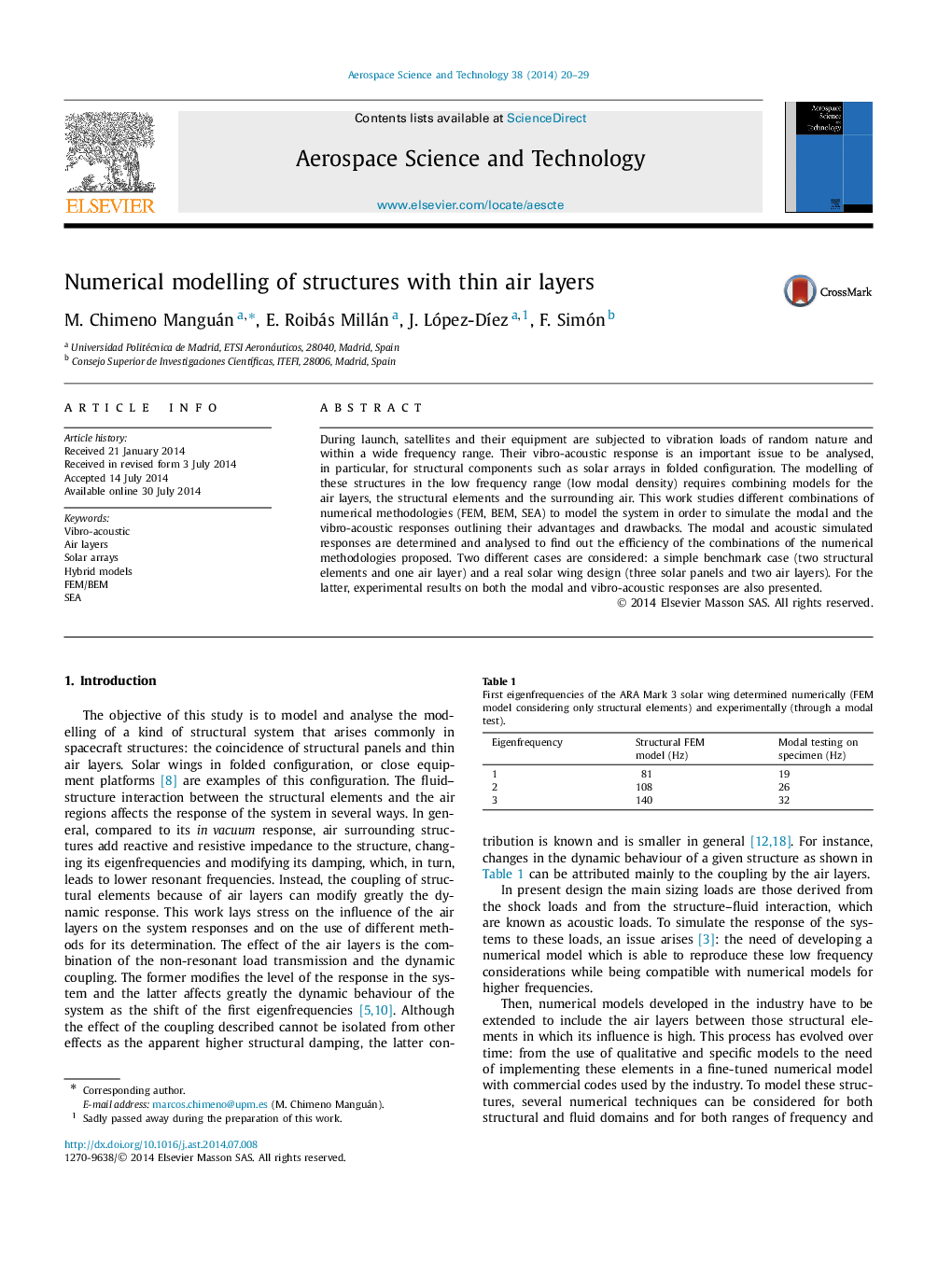| کد مقاله | کد نشریه | سال انتشار | مقاله انگلیسی | نسخه تمام متن |
|---|---|---|---|---|
| 1718045 | 1520096 | 2014 | 10 صفحه PDF | دانلود رایگان |
During launch, satellites and their equipment are subjected to vibration loads of random nature and within a wide frequency range. Their vibro-acoustic response is an important issue to be analysed, in particular, for structural components such as solar arrays in folded configuration. The modelling of these structures in the low frequency range (low modal density) requires combining models for the air layers, the structural elements and the surrounding air. This work studies different combinations of numerical methodologies (FEM, BEM, SEA) to model the system in order to simulate the modal and the vibro-acoustic responses outlining their advantages and drawbacks. The modal and acoustic simulated responses are determined and analysed to find out the efficiency of the combinations of the numerical methodologies proposed. Two different cases are considered: a simple benchmark case (two structural elements and one air layer) and a real solar wing design (three solar panels and two air layers). For the latter, experimental results on both the modal and vibro-acoustic responses are also presented.
Journal: Aerospace Science and Technology - Volume 38, October 2014, Pages 20–29
